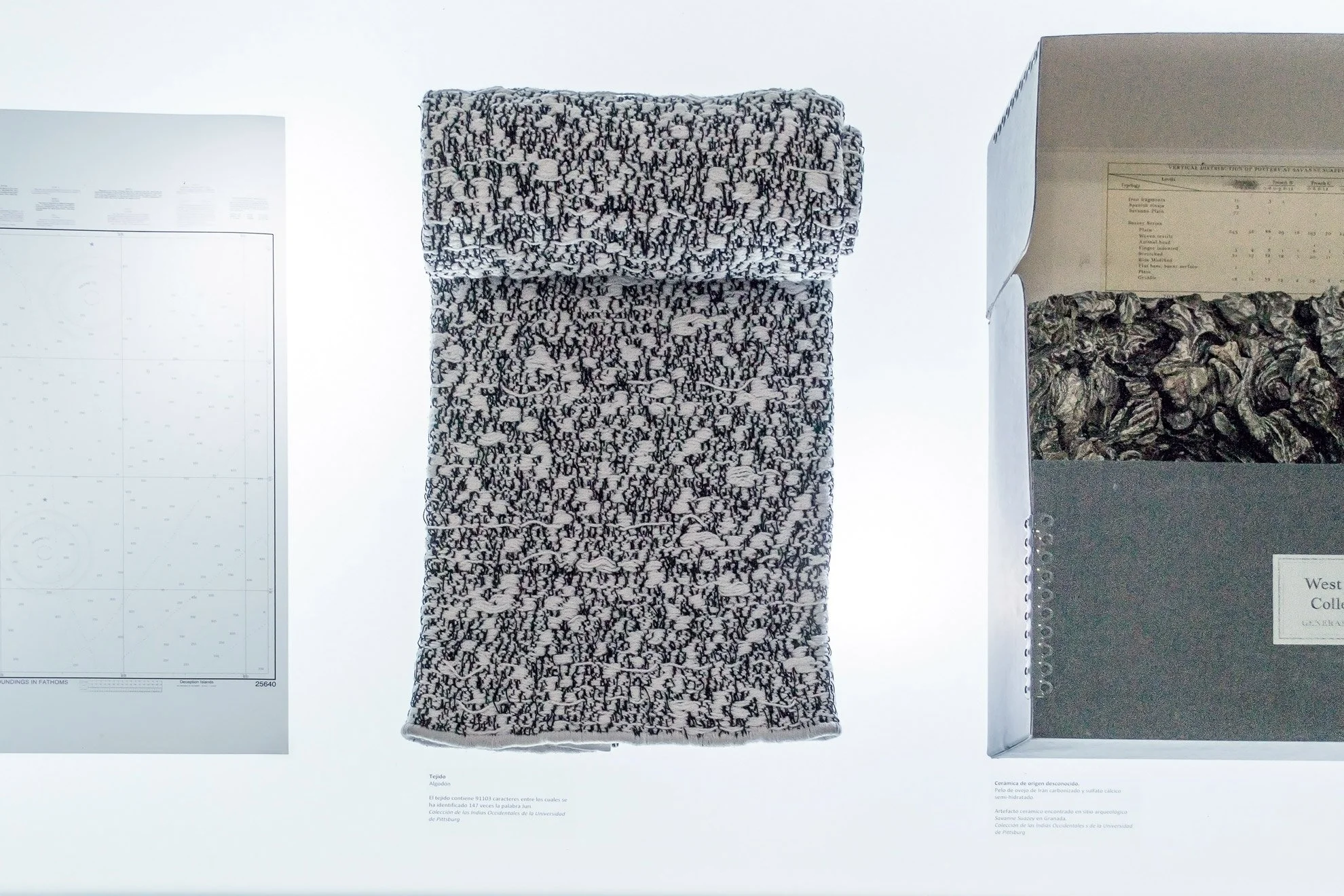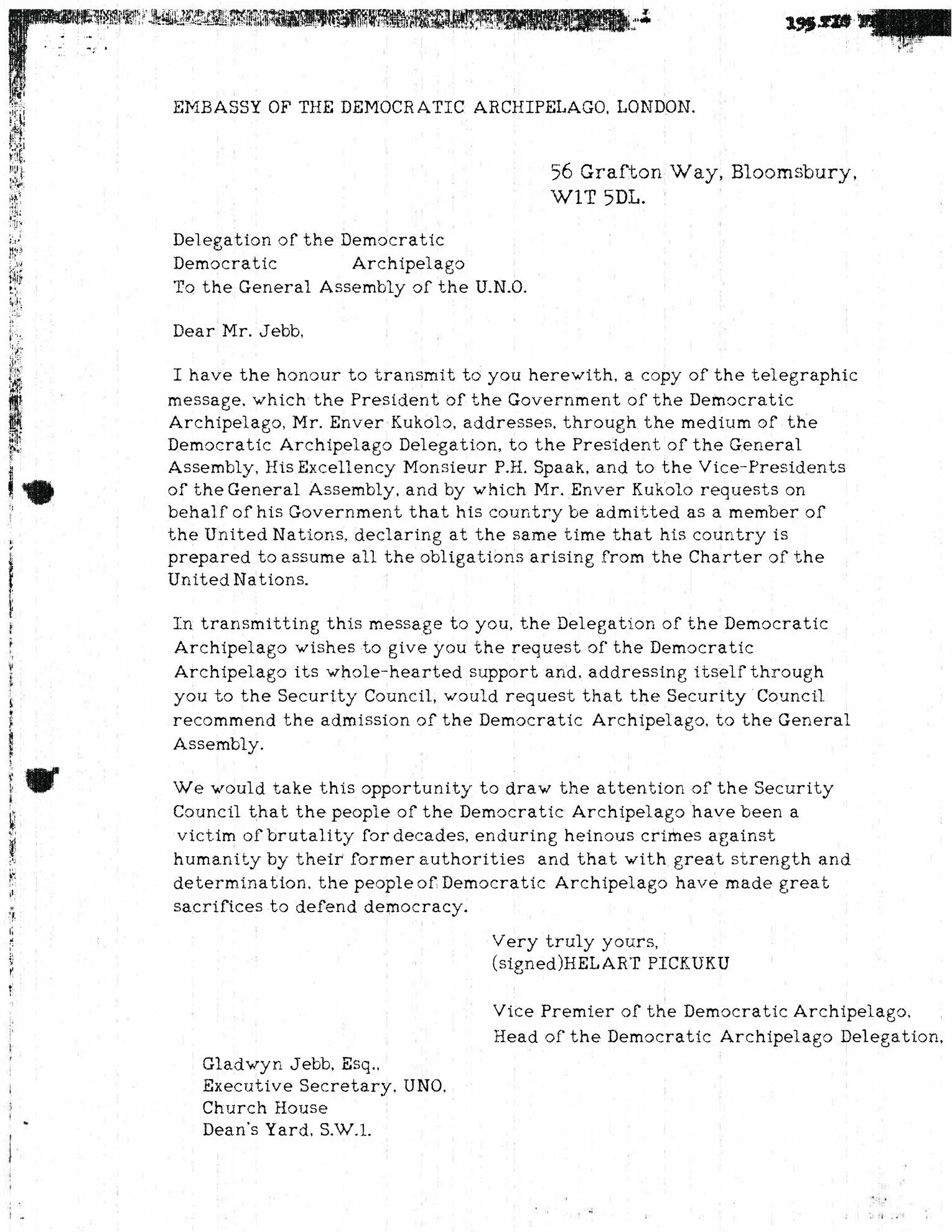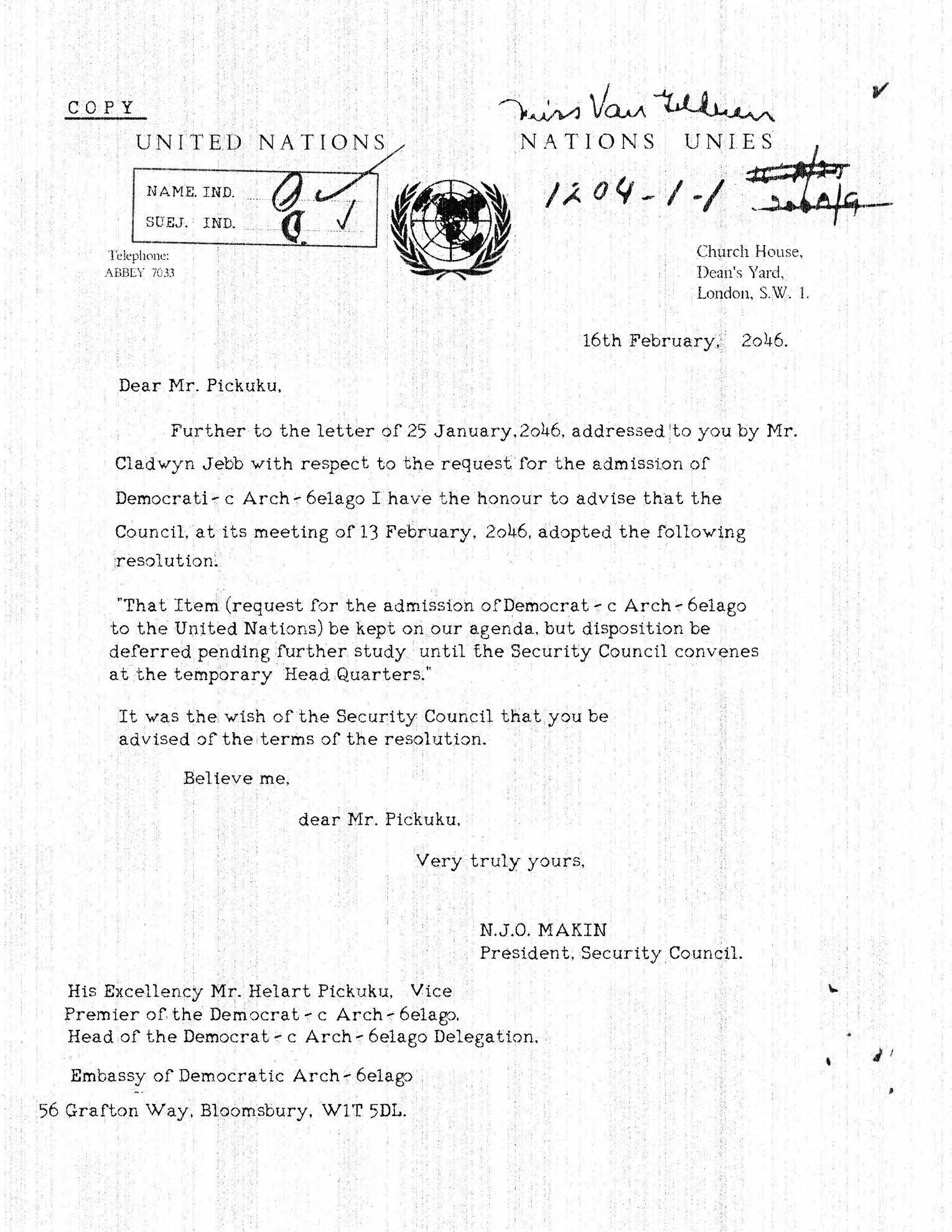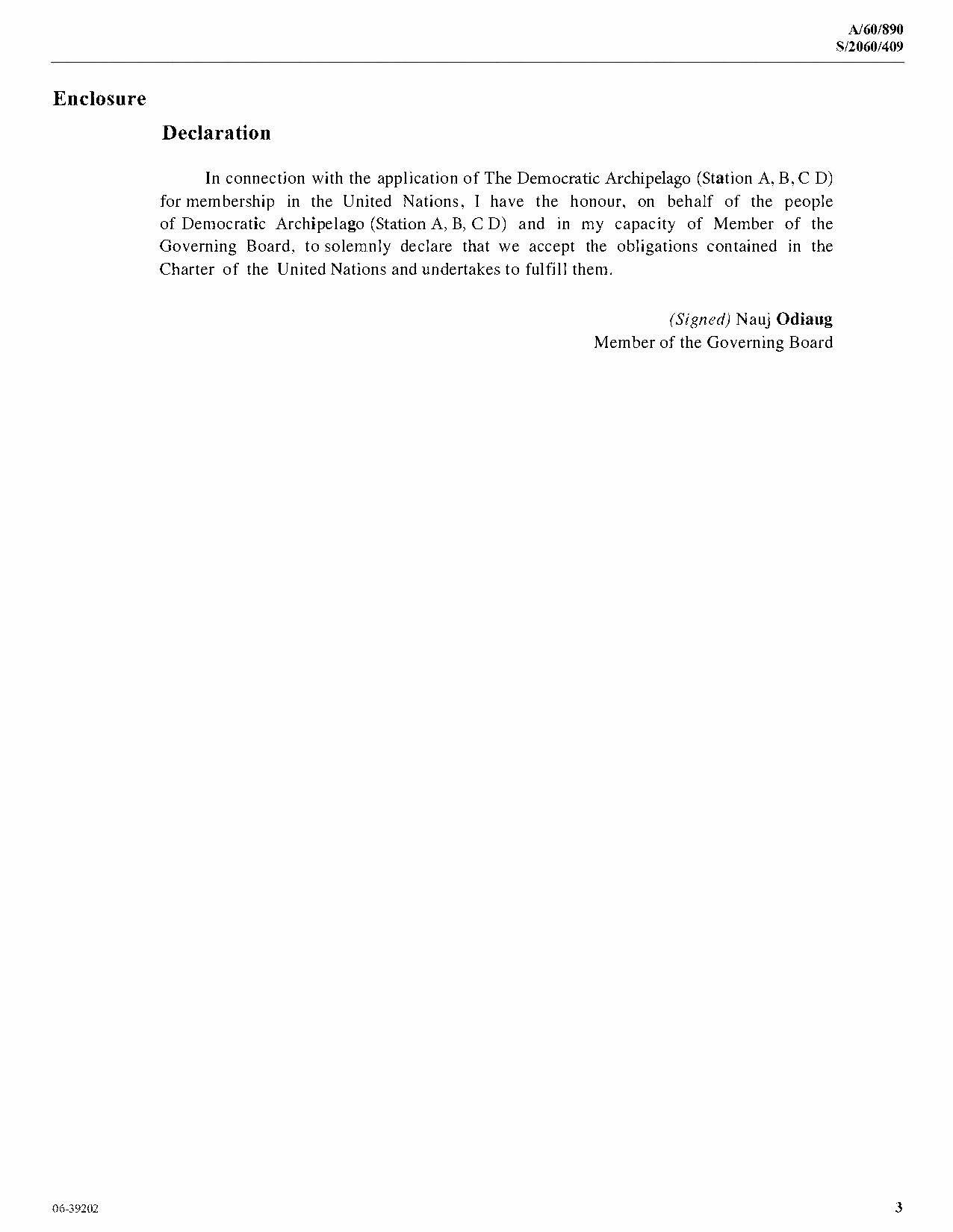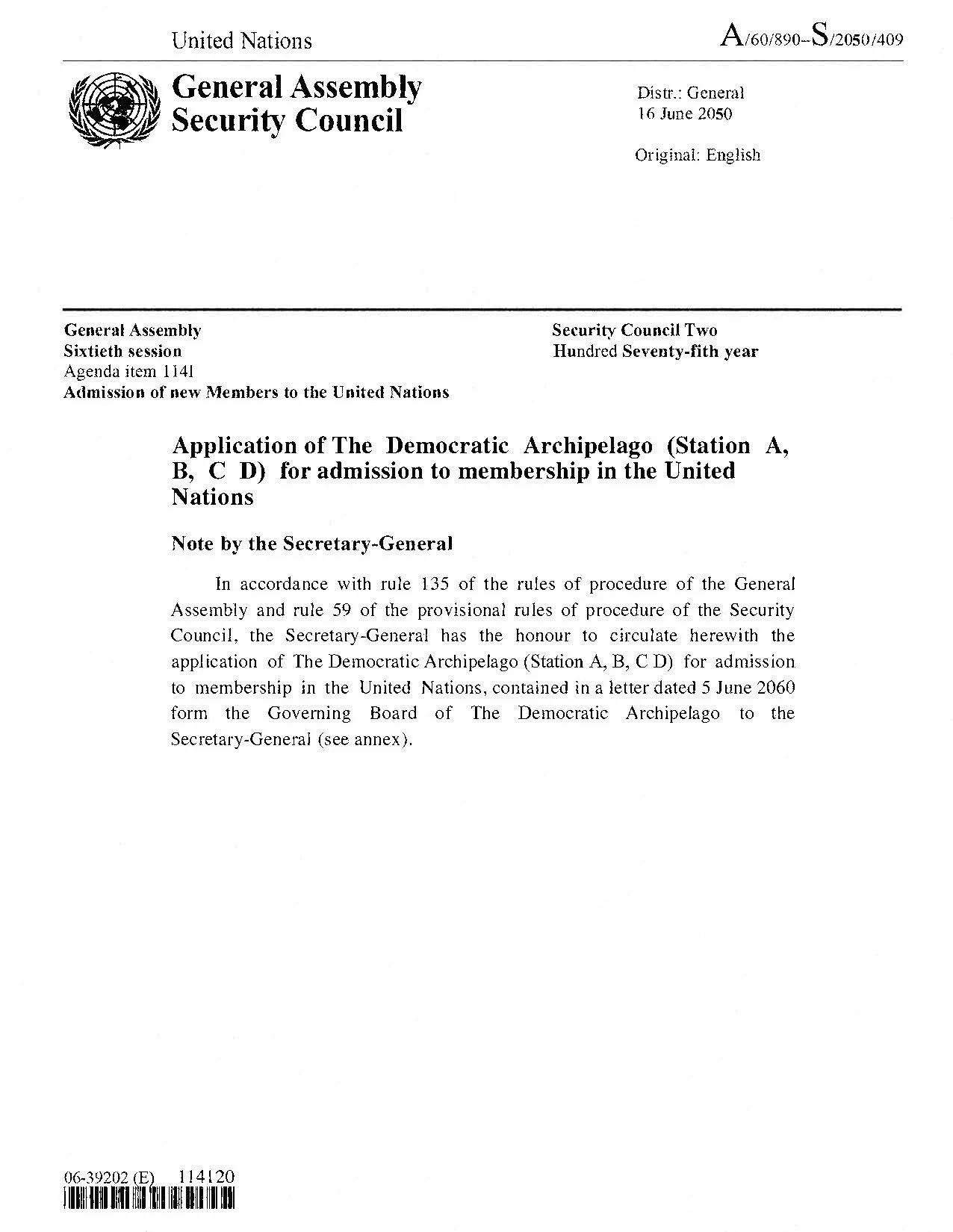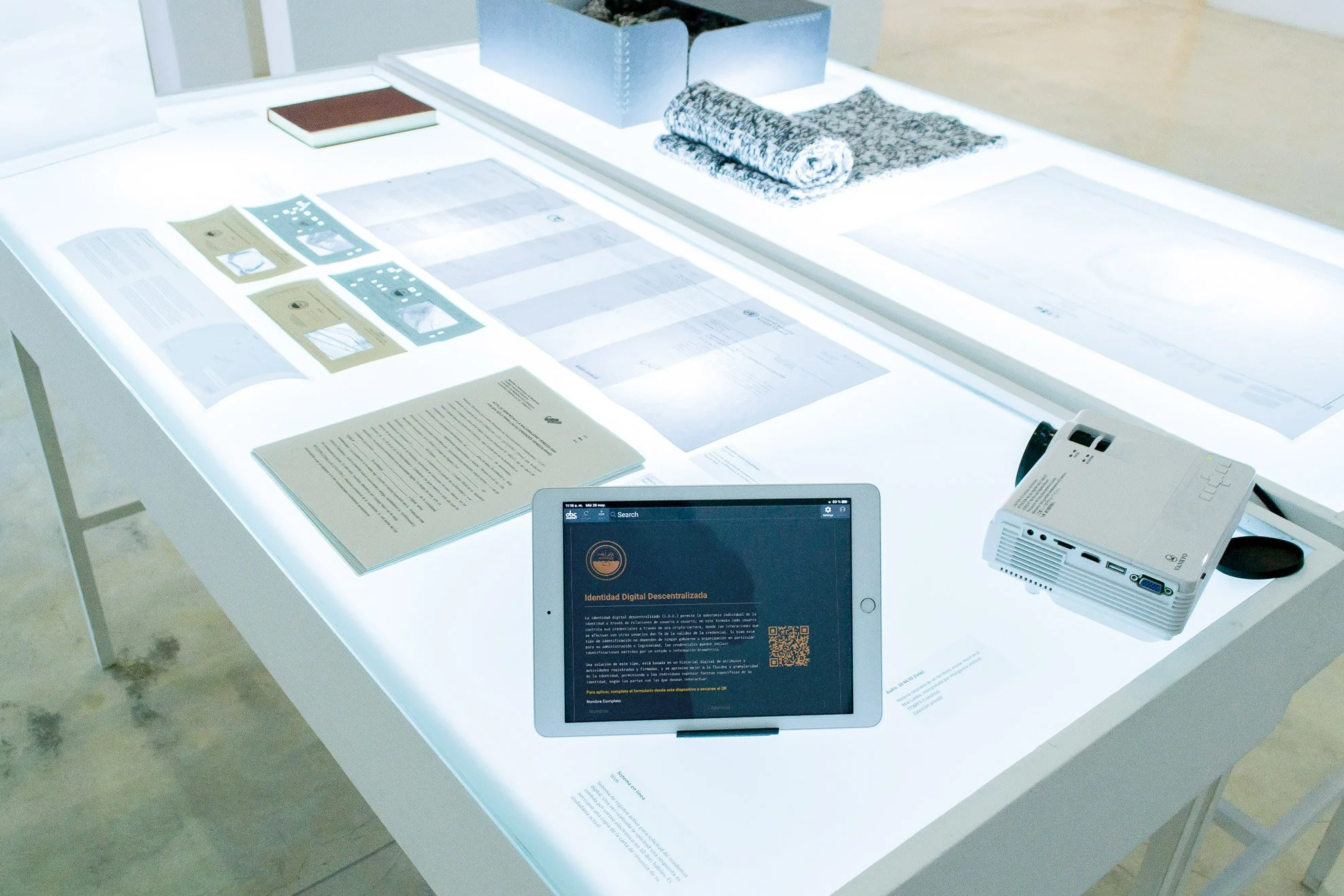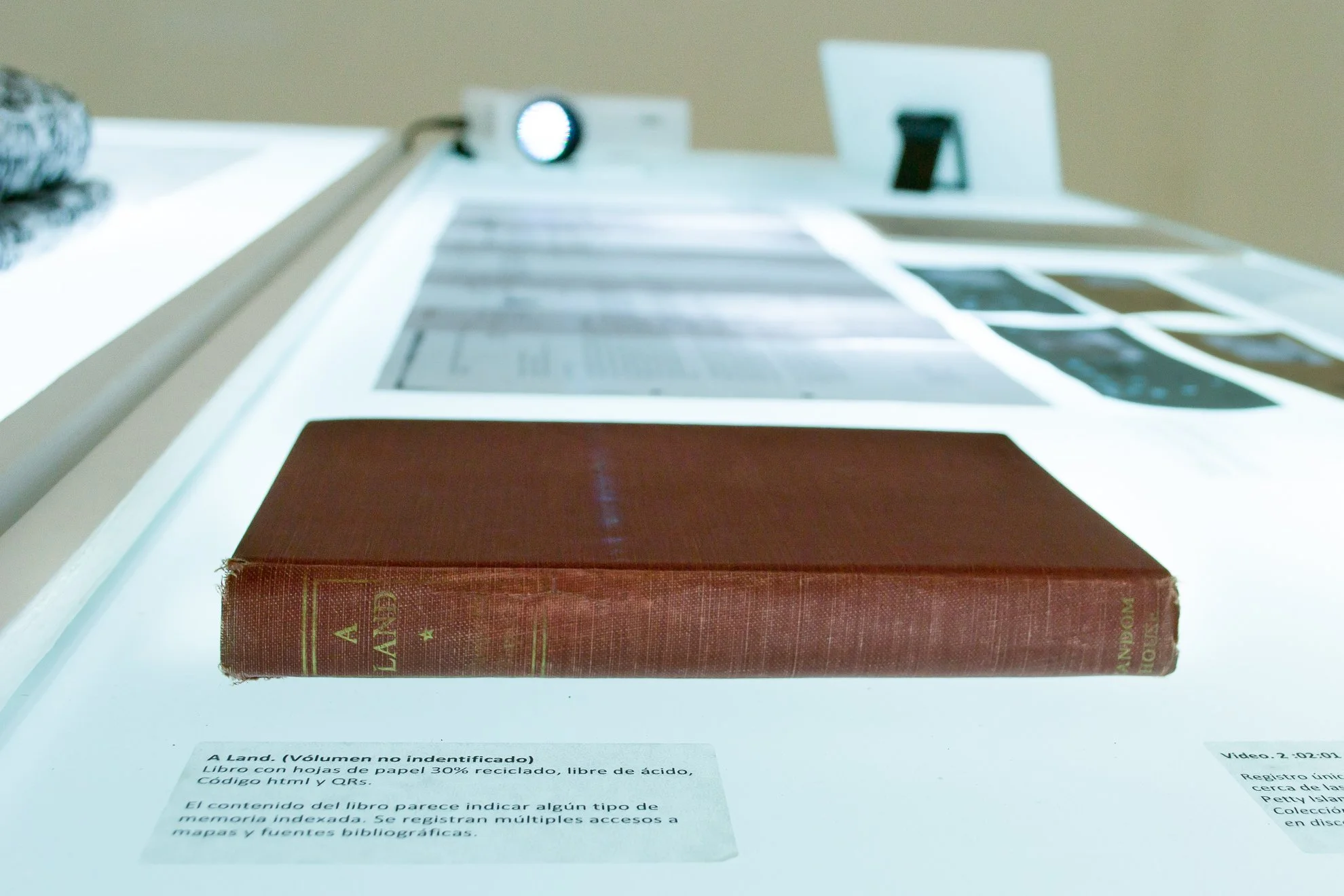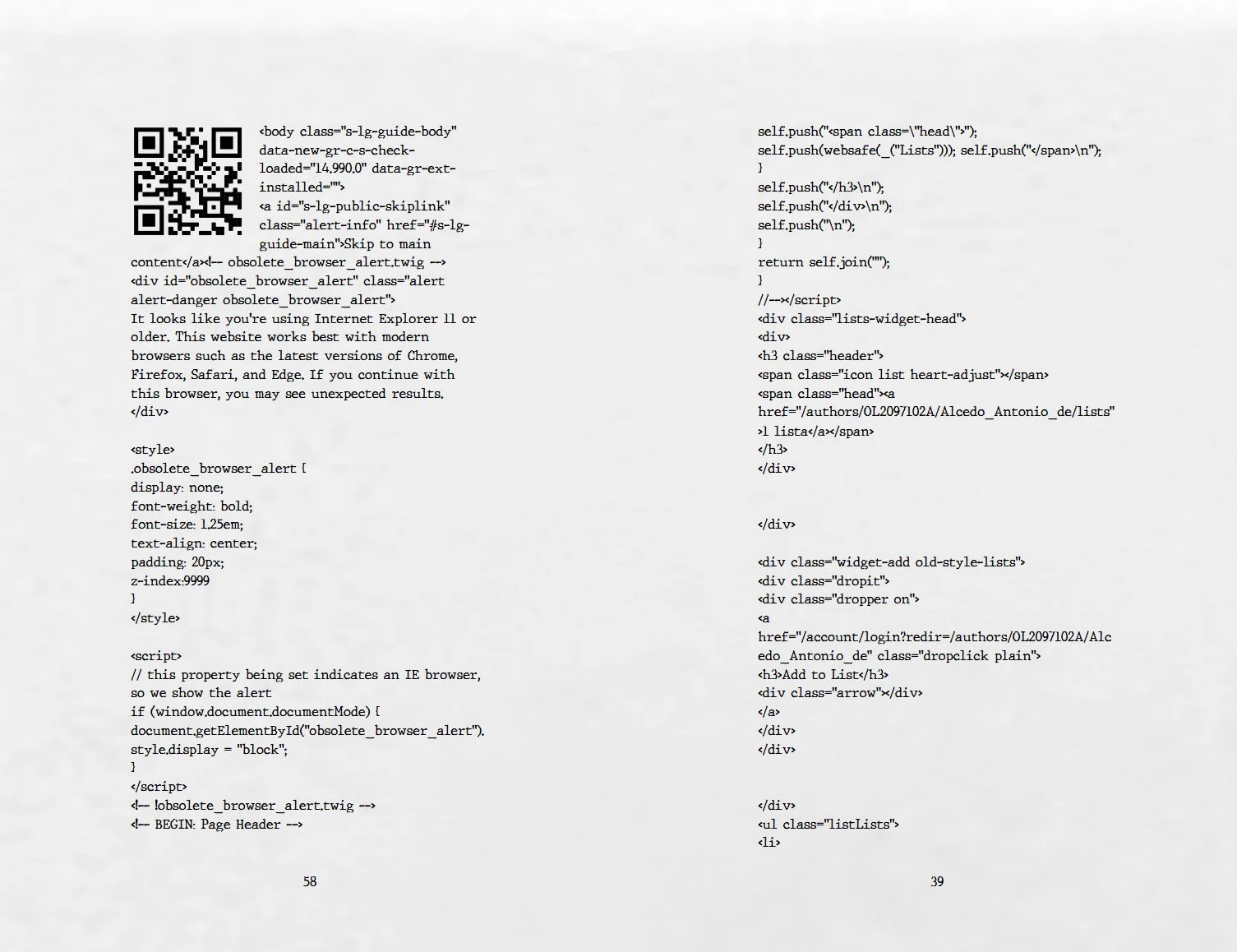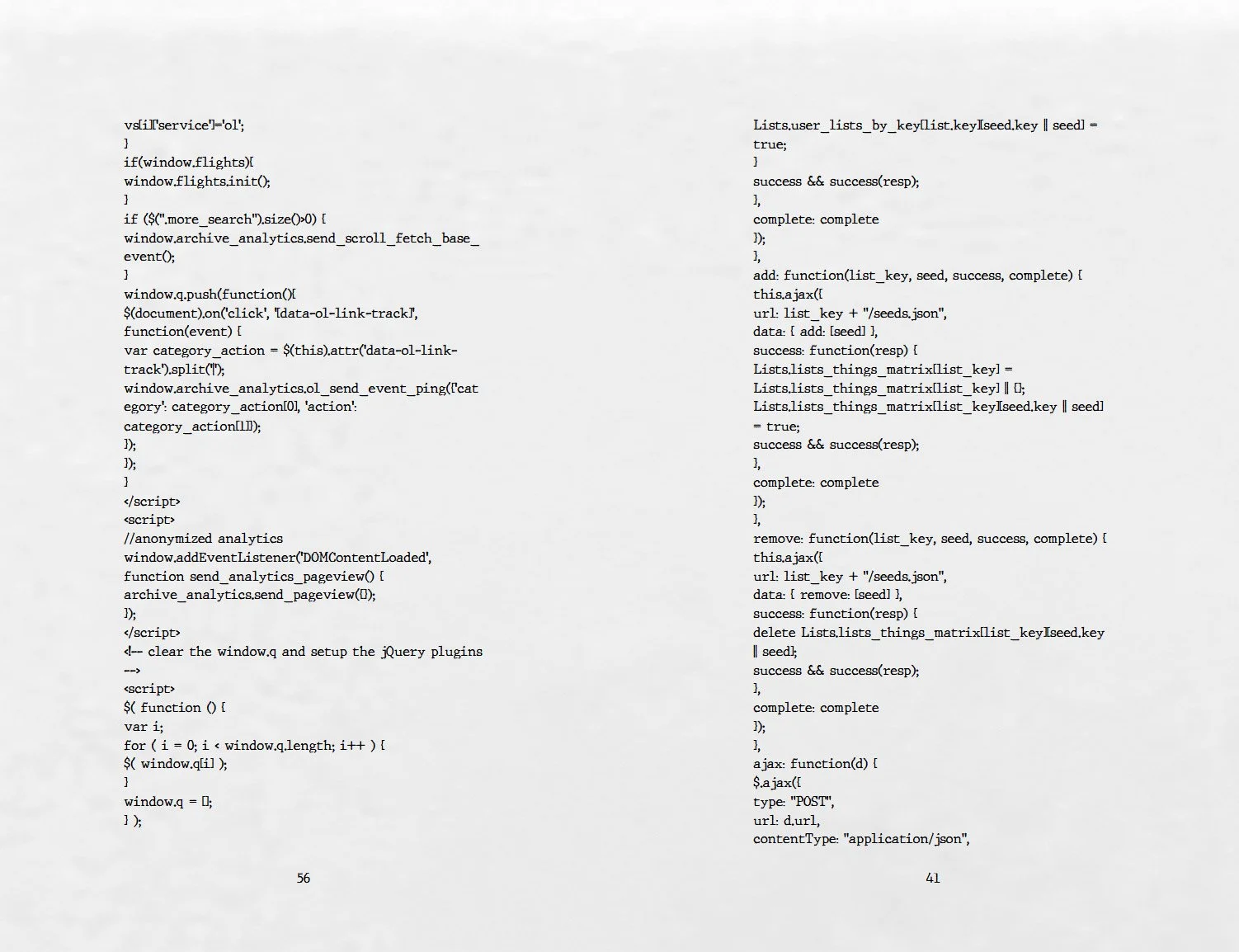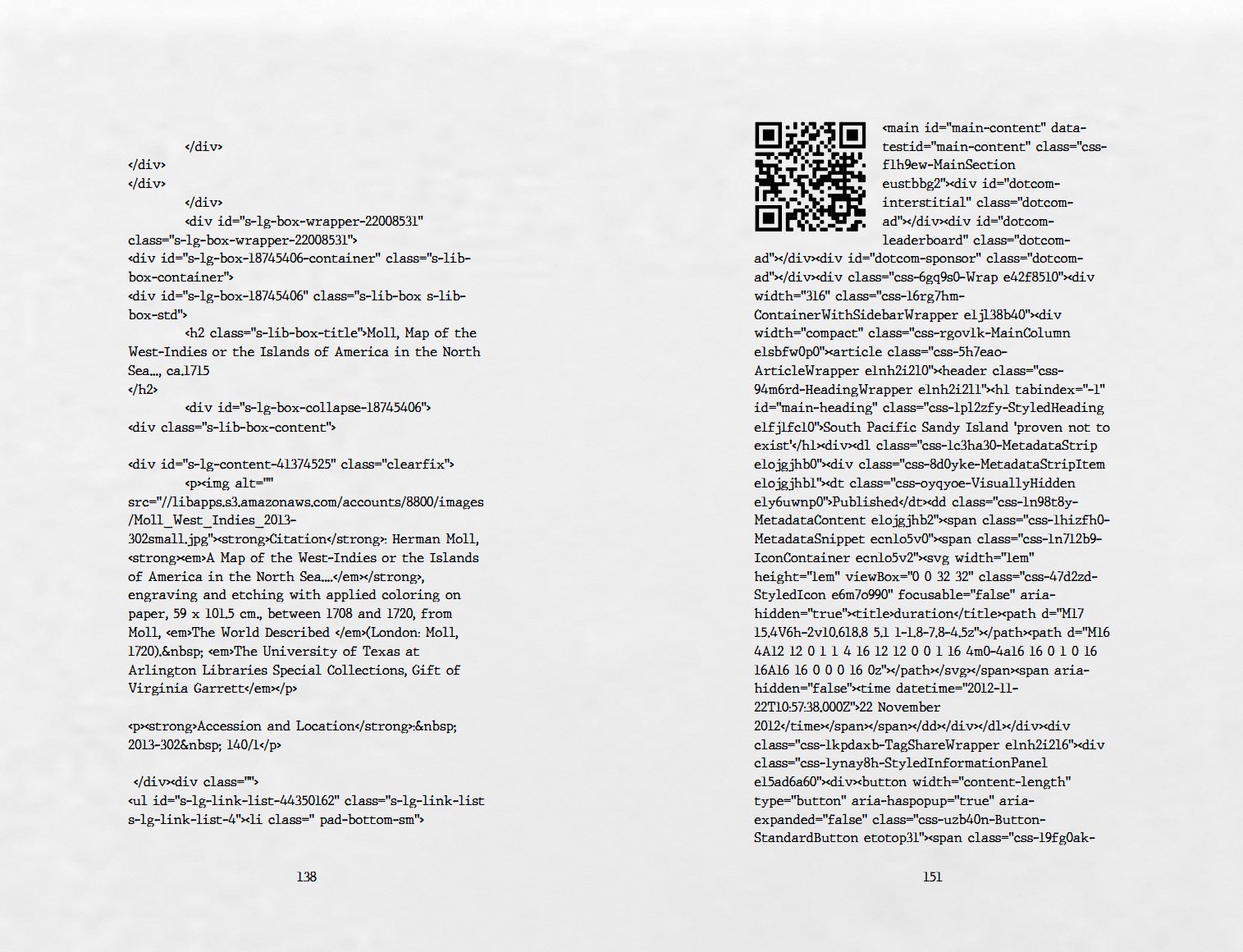Station D
An Archive from the Archipelago
Year: 2022
Materials: Paper, gypsum, cotton, vinyl, video
Dimensions: variable
Location: Sala Eugenio Mendoza. Caracas, Venezuela
Photos: Bernardo Suarez
Station D: Archive from the Archipelago explores the fluid boundaries of nationhood, identity, and territory. Through its diverse artifacts and evocative narratives, the installation plunges viewers into a realm where reality and fiction converge, compelling them to contemplate the transitory and lasting elements of geopolitical entities.
Central to the installation is a retro-lit table, which prominently displays a diverse collection of artifacts, historical documents, and geographical tokens. Each item, thoughtfully curated, reveals facets of Station D's intriguing history and echoes the inherent ambitions and hurdles faced in the quest for political legitimacy. Among the objects, a small video depicts the remnants of Station D–charred gypsum debris and the tenacious presence of vegetation. These remains stand as a testament to the trials and tribulations endured, as well as the resilience for growth despite adversity.
Beyond their visual appeal, the artifacts offer fragments of stories, intricately interweaving ambition and aspiration, thereby illuminating the ever-shifting landscape of geopolitical evolution. Tiles, textiles, maps, and forms are imbued with cryptic stories that encourage viewers to engage in the intricate process of decoding and encoding narratives, all while exploring the construction of national identities.
Complementing the exhibit, Carlota, an AI-generated voice, seamlessly permeates the space with excerpts of historical accounts and hints of future narratives, synchronizing seamlessly with the small video presentation. This synergy enriches the overarching narrative's auditory dimension and weaves past, present, and potential futures together.
Station D reflects on the juxtaposition of identity and geopolitical constructs. The transient video depiction of Station D’s precarious and resilient remnants underscores the ephemeral nature of political and territorial pursuits. The Archive illuminates the human inclination to delineate and define the intangible, a quest that underscores our enduring endeavor to anchor the fluidity of existence within comprehensible geopolitical constructs.
Project Components
1
Station D video: Station D Archive's video piece offers a glimpse into the remnants of Station D, a three sq ft floating expanse composed of charred gypsum debris. Amidst this rugged terrain, vibrant tropical vegetation resiliently thrives. In synchrony, the voice of Carlota, an AI, narrates accounts sourced from historical documents, enhancing the visual experience.
2
Station D Nautical Chart: This nautical chart offers a comprehensive view of the Station D archipelago, showcasing a network of interconnected islands. Within the chart, various danger zones and detailed sea depth indicators are marked, serving as a valuable navigational tool for seafarers, and providing crucial information for safe passage.
3
Station D Fragment: Within the labeled archival box, known as the "West Indies Collection," rests a fragment of debris sourced from Station D, featured in the video. The tile comprises charred gypsum intricately embedded with the remnants of melted acrylic yarn, a material commonly found in clothing textiles. These artifacts witness extreme temperatures, reaching as high as 5730 degrees Fahrenheit. This intense process ultimately transformed them into a petrified form reminiscent of dead burnt plaster, providing an intriguing glimpse into Station D.
4
Station D Textile: Within the labeled archival box, known as the "West Indies Collection," rests a fragment of debris sourced from Station D, featured in the video. The tile comprises charred gypsum intricately embedded with the remnants of melted acrylic yarn, a material commonly found in clothing textiles. These artifacts witness extreme temperatures, reaching as high as 5730 degrees Fahrenheit. This intense process ultimately transformed them into a petrified form reminiscent of dead burnt plaster, providing an intriguing glimpse into Station D.
5
Station D Documents: This collection comprises a diverse array of materials, each shedding light on a unique aspect of Station D's history. Included are United Nations documents formally requesting recognition as a legitimate democratic territory, underscoring Station D's intricate geopolitical journey. Additionally, a series of microfiche containing geographical information in slide format offering valuable insights into the archipelago's ever-evolving landscape. Lastly, a newspaper article delves into the proliferation of manufactured islands, placing Station D within the broader context of artificial landmasses. Together, these documents form a comprehensive archive, enriching our understanding of Station D's multifaceted narrative.
6
Citizenship Records: Within the Archive, you'll find documented records of two key forms—the Nationality Resignation Form, a traditional paper application allowing individuals to relinquish their continental nationality, and the Digital Citizenship Application Form, accessible online and via a small tablet, designed for those seeking membership in a new decentralized citizenship.
6
A-land: This is an industrially bound volume, using case binding methods, containing HTML code from diverse online sources. A QR code accompanies each source, although many of these original references no longer belong to the internet general archive. This compendium offers valuable insights into the history of Station D.







